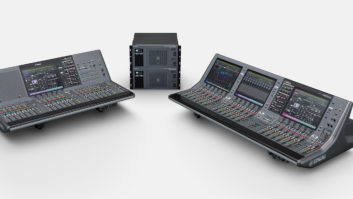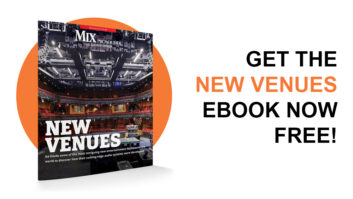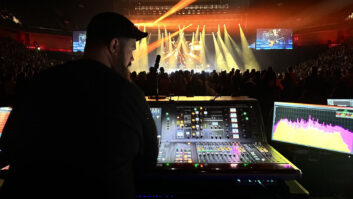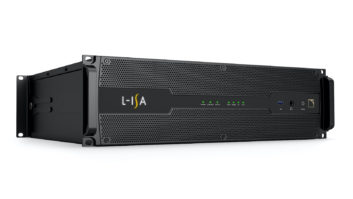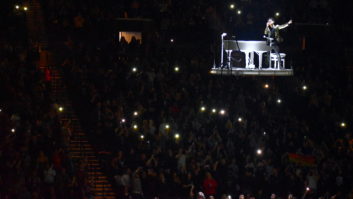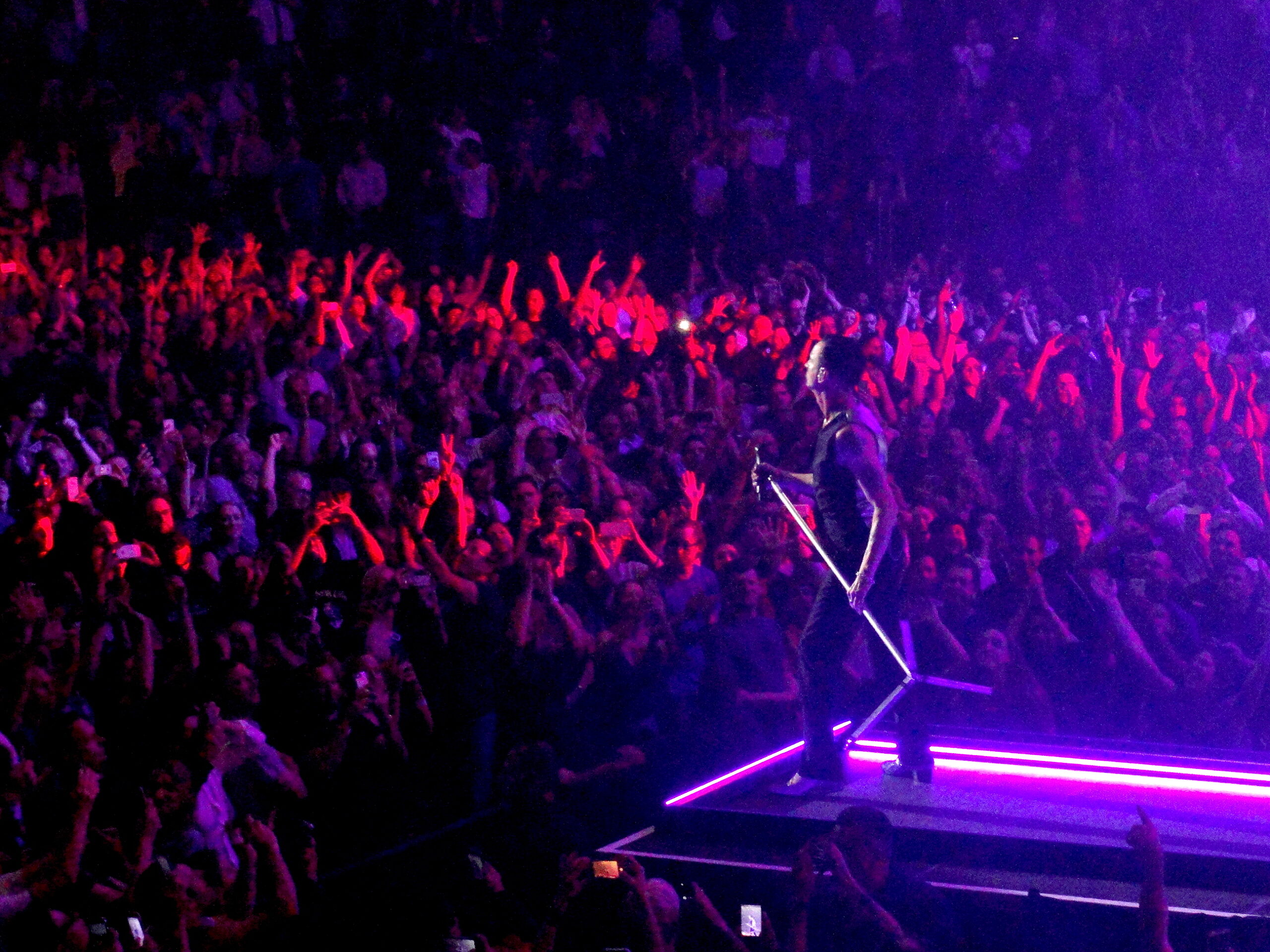
New York, NY (January 5, 2018)—38 years into the band’s career, Depeche Mode is arguably bigger than ever, as proven by its massive Global Spirit world tour supporting the band’s 14th studio album, Spirit. By the time the 11-month mix of stadium and arena gigs wraps up in late March, the group will have played for millions of fans around the world, and helping ensure they all hear every note is a seven-man audio team overseeing audio production from Britannia Row (London, UK).
Key to the band’s live sound are longtime engineers Antony King (FOH) and Sarne Thorogood (monitors), who, after mixing the last few Depeche Mode tours on aging Midas XL8 desks, decided to change things up, moving to a SSL L500 Plus console at FOH and Midas ProX at stageside. “SSL was a no-brainer,” laughed King. “They’ve made decent stuff for donkey’s years so you’re not going off-piste. I called them up, took an old Depeche Mode show up to their office, and they set me up with some speakers, showed me how to assign everything and said ‘See if you enjoy it’—and I did.”
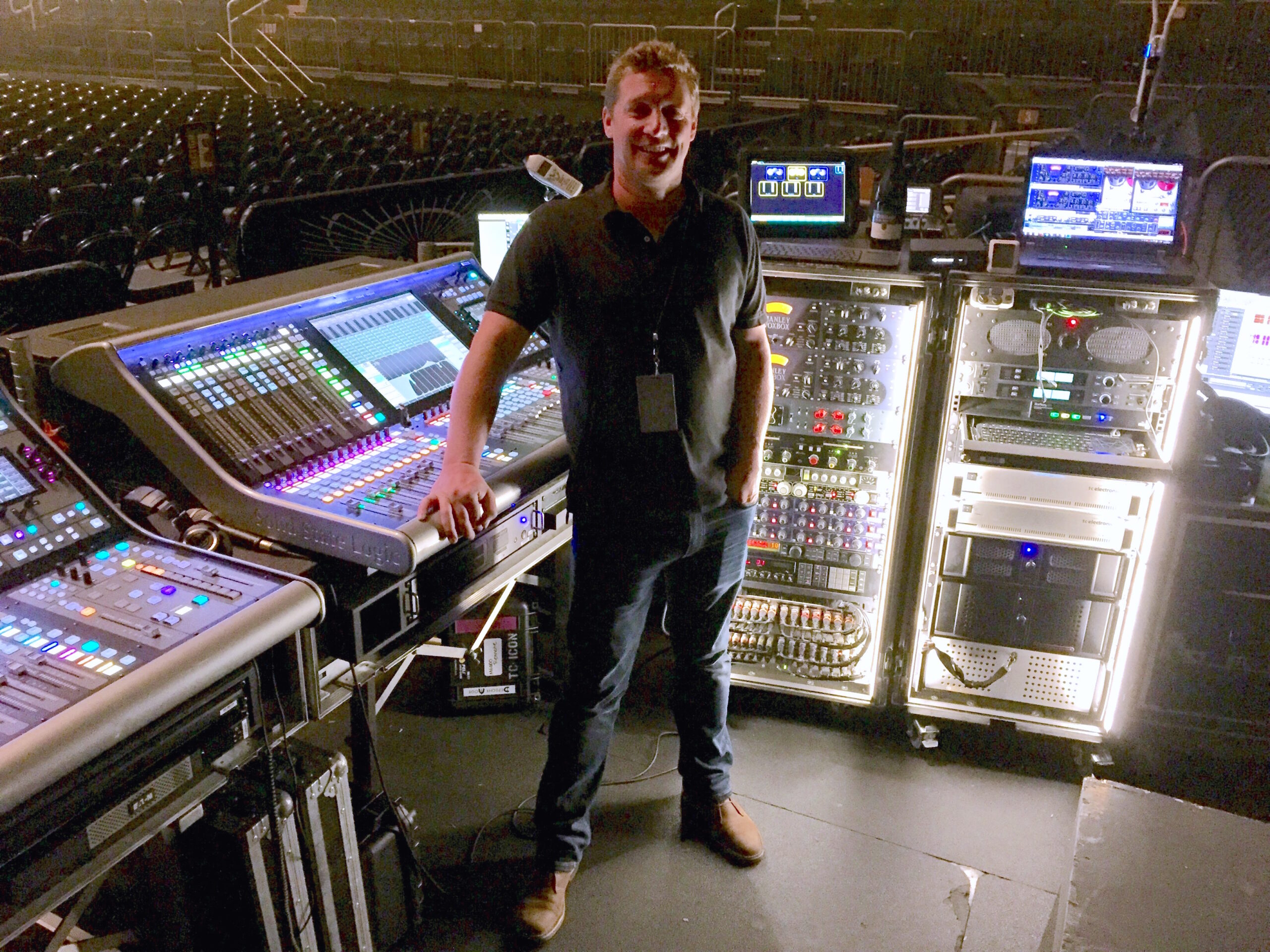
The result is that King uses the desk to mix 80-odd channels every night, with each show recorded to a custom-built Magix Sequoia DAW. As might be expected, snapshots are used to move from song to song and trigger some effects, but nearly all of the latter originate off-console in two racks of outboard gear. “I have Manley VoxBox on the vocals—a very versatile thing to have—and a Chandler TG1 Limiter on the drums, because if you set it to limit and smash it, you get a really cool sound out of those,” he said. “I’ve also got a Fatso on the snare for a bit of fun, and an old Yamaha REV7 on the snares and the toms as a throwback reverb because they don’t make anything that filthy anymore. There’s an Eventide H3000 because nothing quite does that as a plug-in, and two TC Electronic M6000 for all the vocal reverbs; it’s got loads of cool stuff like multiband compressor and a de-esser I use.” That said, plug-ins are still employed at the FOH position: “I have a UAD Quad Box set up and I run it Dante in and out of outboard, so I run some emulations like an old RMX16—older pieces of gear where you’d need three on the road just to always have one that worked.”
The result of all that gear is that while the band may play electronic music, the vibe is decidedly warm and human, and indeed, King aims to create a live-sounding mix as opposed to merely aping the original tracks. Nonetheless, he acknowledges that some trademark sounds are essential; for instance, tour drummer Christian Eigner pounds a real drum kit, but the snares and kicks often trigger samples layered on top, retaining the energy of the live snare while presenting the familiar flavor of the original track.
Along with the consoles, another switch for the tour is a full-on move to Beyerdynamic mics across the board. Impressed with M160 ribbon mics, King contacted the manufacturer and soon was experimenting with the company’s offerings during rehearsals. “We decided if the first day didn’t go well, we’d just change it back, but it worked out great,” King recounted. As a result, both frontman Dave Gahan and guitarist Martin Gore use TG 1000 handheld transmitters with hypercardioid TG V70w interchangeable capsules, while musical director Peter Gordeno has a wired TG V70 for vocals, and Eigner’s drums are surrounded by a slew of Beyerdynamic mics.
Above them all on stage is a massive L-Acoustics K1/K2 system, with left-right hangs of 16 K1s with four K2s each for down fill; side hangs of 14 K1s and four K2s each, and a dozen Karas used as rearfills since the audience is sold 270 degrees. A full 12 KS28 subs line the front of the stage, spaced evenly with a selection of Karas used as frontfills. “Usually on the ends, we’ll put an ARC on the floor just pointing up because the rear fill is quite high—it brings the image down a bit so it doesn’t feel like you’re listening to something from somewhere else,” said King.
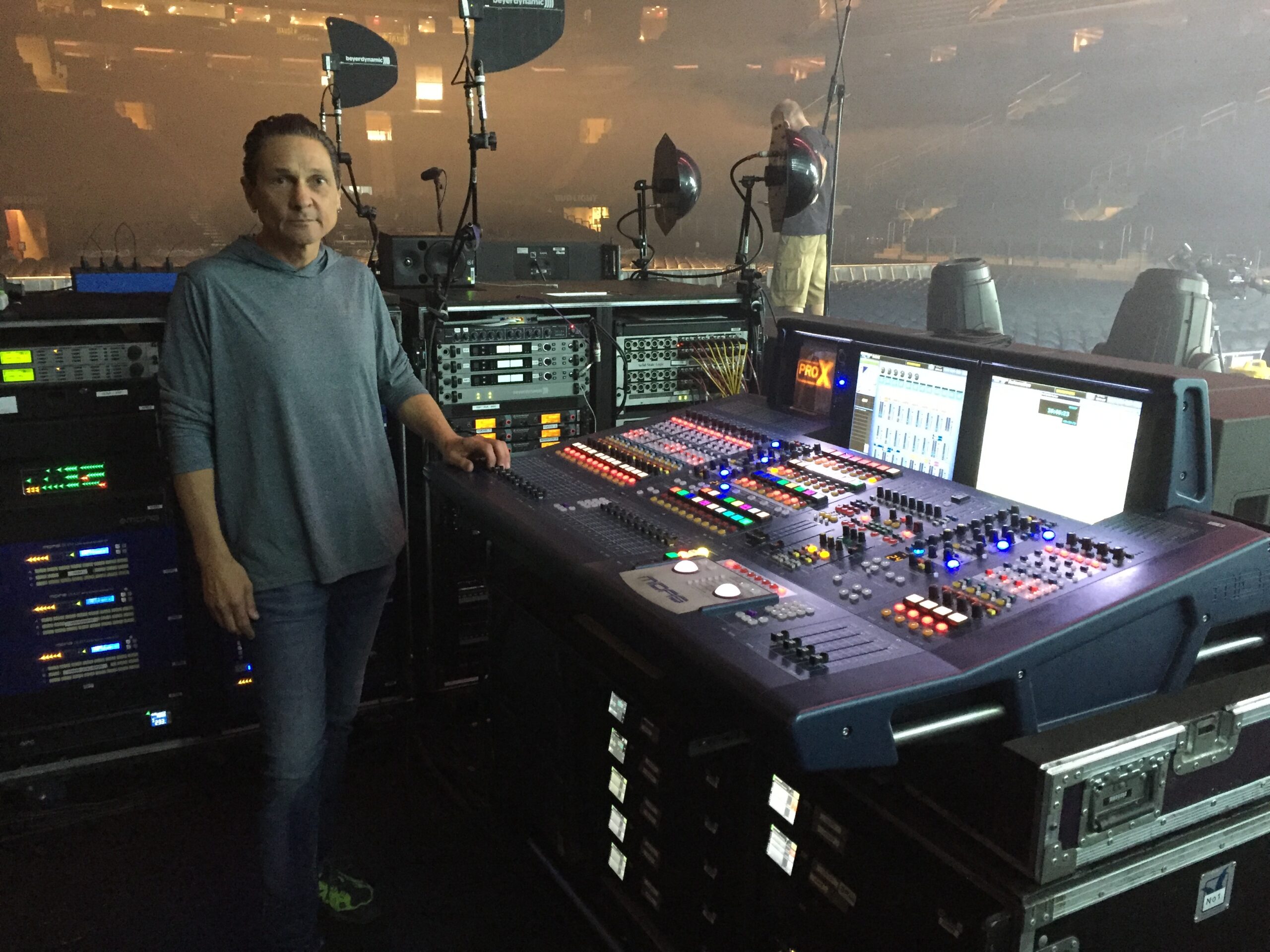
Previous Depeche Mode tours had flown sidefills for the band, but those have gone away this time around, as the band continues its migration to personal monitors. Between musicians, spares and techs, Thorogood looks after 10 sets of Ultimate Ears 18+ PROs on Sennheiser wireless, and likewise sends four mono mixes and five stereo mixes to floor monitors across the stage. “Dave still has his wedges,” said Thorogood, “so any time he likes, he can pop them out, plus the wedges give the weight that you won’t get from in-ears. Martin is the same set up that he’s always had— one in-ear—which is just his vocal and click track.”
For Thorogood, key to mixing monitors is to not only listen to the mixes but also to what the artist is truly asking for: “There are so many little factors with a perfect in-ears left-right mix where if you make one little adjustment here, it’s going to affect something over there. An artist might say, ‘I need my vocal louder.’ OK, if you turn the vocal up, what that’s doing is also turning everything else down, so it could be a situation where he or she needs everything up. Alternately, the artist might say ‘I need more band, I need more everything else apart from me.’ OK, that means your vocal needs to come down.”
While the FOH position has a slew of outboard gear, Thorogood leans more heavily on the onboard offerings of his Midas ProX desk: “I use everything on the console apart from my two external reverbs, which are TC Electronic M3000s for Dave’s vocal.”
This month will find the tour resuming as it runs through Europe for a second time. “Europe is more interactive,” observed King. “They’ll sing more, and probably are more responsive to newer stuff; they get on board.” But that said, the North American run this past fall gave the Old World a run for its money, he said: “The crowd in Montreal hit 110-plus on the meter! It was super loud and there’s no point in fighting that—you just let them scream it out of their system.”
Britannia Row • www.britanniarow.com
Beyerdynamic • www.beyerdynamic.com
SSL • www.solidstatelogic.com

